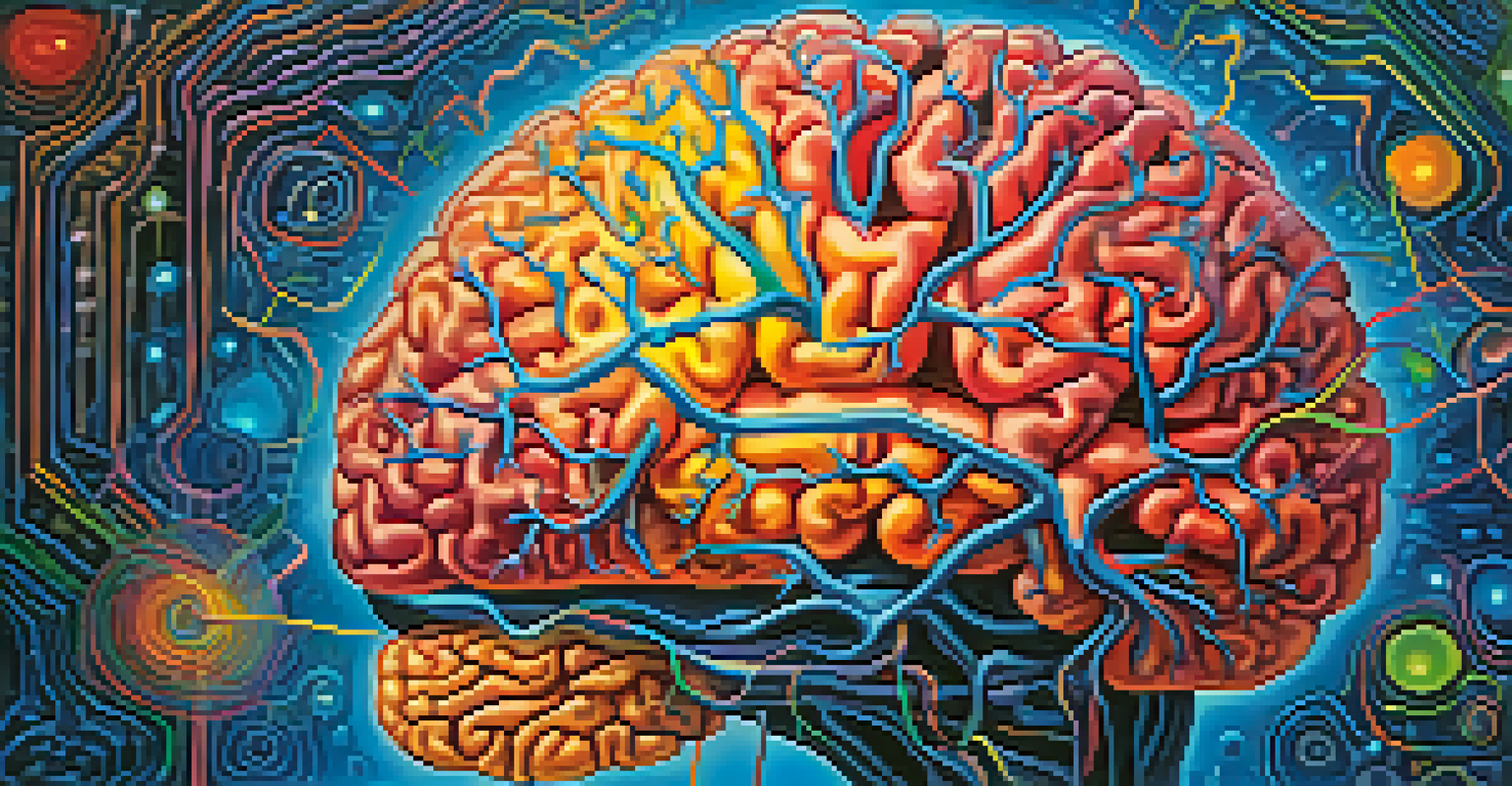Entheogens in Therapy: Rebuilding Personal Narratives

Understanding Entheogens and Their Role in Therapy
Entheogens are substances that can induce altered states of consciousness, often used in spiritual or therapeutic contexts. They include natural compounds like psilocybin from mushrooms and ayahuasca, a brew made from Amazonian plants. In therapy, these substances are gaining recognition for their potential to facilitate deep emotional healing and self-exploration.
The greatest discovery of my generation is that a human being can alter his life by altering his attitudes.
The core idea is that entheogens can help individuals confront and process trauma, leading to significant shifts in perspective. Think of it as a powerful lens that helps clarify personal stories and emotions, allowing for deeper understanding. This process can unveil layers of the psyche that traditional methods might overlook.
As research into these substances expands, so does their integration into therapeutic practices. They're not just recreational; rather, when guided by professionals, they create a safe space for healing. This shift in perception is vital for rebuilding personal narratives and promoting overall well-being.
The Science Behind Entheogens and Healing
Recent studies have shown that entheogens can have profound effects on brain activity and emotional processing. For instance, psilocybin has been linked to increased neural connectivity, which can help break down rigid thought patterns. This flexibility allows individuals to reframe their life experiences, leading to healthier narratives.

Furthermore, these substances often induce experiences of ego dissolution, where boundaries between self and other blur. This can lead to insights about one's life story and the interconnectedness of experiences. Imagine peeling back the layers of an onion; with each layer removed, a deeper understanding emerges.
Entheogens Aid Emotional Healing
Entheogens facilitate deep emotional healing and self-exploration by helping individuals confront trauma and reshape their personal narratives.
The therapeutic use of entheogens aims not just at alleviating symptoms but at fostering transformative growth. As clients explore their inner worlds, they can identify and challenge negative beliefs. This process is essential for reconstructing a more positive and empowering personal narrative.
Personal Narratives: The Stories We Tell Ourselves
Personal narratives are the stories we create to make sense of our lives. They shape our identity and influence how we interact with the world around us. Often, these narratives can become distorted by trauma or negative experiences, leading to feelings of helplessness or despair.
We are all storytellers. We are all a product of our own stories.
By engaging with entheogens in a therapeutic setting, individuals can begin to rewrite these narratives. The insights gained during sessions can illuminate the reasons behind certain beliefs and behaviors. It's akin to having a conversation with a wise friend who helps you see your life from a different angle.
Rebuilding these narratives is crucial for personal empowerment. As individuals gain clarity on their past, they can craft a future that aligns more closely with their true selves. This shift not only enhances self-esteem but also fosters resilience in the face of adversity.
Guided Therapy: Creating Safe Spaces for Exploration
The journey with entheogens in therapy is often guided by trained professionals who ensure a safe and supportive environment. This guidance is vital, as navigating intense emotions and insights can be overwhelming. Think of it like having a trusted friend by your side during a challenging hike; their presence can make all the difference.
Therapists often prepare clients before a session, helping them set intentions and grounding them in their goals for healing. After the experience, integration sessions are crucial for processing what was encountered. This structured approach helps to solidify insights and ensure the therapeutic benefits are realized.
Therapist Guidance is Essential
Trained professionals create safe environments for clients to explore intense emotions, ensuring that the therapeutic process is both supportive and effective.
By fostering trust and safety, therapists enable clients to delve into their personal narratives without fear. This supportive framework allows for authentic exploration, making the journey of self-discovery both profound and transformative.
Common Challenges in Rebuilding Personal Narratives
While the potential benefits of using entheogens in therapy are substantial, challenges can arise during the process. One common issue is confronting deeply buried traumas, which can be both cathartic and distressing. This emotional turmoil can sometimes feel like opening a floodgate, leading to overwhelming feelings that need careful navigation.
Additionally, there may be resistance to change, as individuals can be attached to their existing narratives, even if they're painful. It's important to remember that change can be uncomfortable, much like trying on a new pair of shoes—initially awkward but ultimately liberating. This resistance is a natural part of the healing journey.
Therapists play a pivotal role in helping clients work through these challenges. By providing tools and support, they can guide individuals in reframing their stories while gently addressing fears. This collaborative effort is essential for successfully rebuilding personal narratives.
Success Stories: Transformations Through Entheogens
Many individuals have reported life-changing transformations after engaging in therapy with entheogens. For example, some have described how a single session helped them release years of pent-up grief, allowing them to finally move forward. These stories highlight the profound impact that guided experiences can have on personal narratives.
In various case studies, clients have shared how they were able to confront traumatic events and develop a new sense of self. This shift often leads to renewed purpose and direction in life. Imagine standing at the crossroads of your narrative; suddenly, the path forward becomes clear and inviting.
Transformative Success Stories
Many individuals experience profound transformations through entheogenic therapy, leading to renewed purpose and a clearer path forward in their lives.
These success stories serve as powerful reminders of the human capacity for healing and growth. As more people share their experiences, the stigma around entheogens in therapy continues to diminish. This cultural shift opens the door for even more individuals to explore the transformative potential of their personal stories.
The Future of Entheogens in Therapeutic Practices
As research continues to illuminate the benefits of entheogens in therapy, the future looks promising. Increasing acceptance in both clinical and public spheres suggests a growing embrace of these tools for healing. Regulatory changes are also beginning to reflect this shift, allowing for more structured and safe therapeutic applications.
The integration of entheogens into mainstream therapy could lead to a paradigm shift in mental health treatment. Imagine a future where these substances are recognized alongside traditional therapies, providing a holistic approach to healing. This evolution could empower individuals to reclaim their narratives and foster deeper connections with themselves.

While challenges remain, the momentum behind entheogenic therapy is undeniable. As awareness spreads and more success stories emerge, the potential for change grows stronger. The journey to rebuild personal narratives is just beginning, with entheogens paving the way for new possibilities.